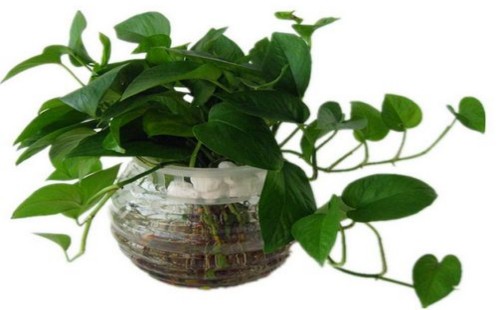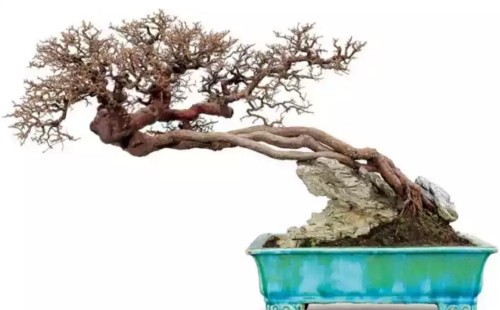Can sparrow plum bonsai be planted in the north?
Sparrow plum is a good material for making bonsai, especially in Lingnan bonsai. However, Finch plum likes the warm and humid growth environment, so it is a kind of tree species suitable for growing in tropical and subtropical areas, so it is very suitable for planting and breeding in the south of China. Because the temperature in southern China is relatively high and the humidity is relatively high, it is very suitable for the growth of sparrow plum. So, can sparrow plum bonsai be planted in the north?

As for whether sparrow plum is suitable for planting in the north of China, we should first understand the characteristics of the climate and environment in the north, and at the same time, according to the requirements of the growth environment of sparrow plum. Because the temperature in the north of China is much lower than that in the south, especially in winter, there may even be an ultra-low temperature climate. Finch plum has the characteristics of being warm and not cold-resistant, so from this point, Finch plum is not suitable for planting and breeding in the north of our country.
Finch plum is not suitable for planting and breeding in northern China, the biggest difficulty is the effect of temperature on its growth, followed by the effect of humidity. Because sparrow plum likes the warm and humid climate environment, it has the characteristics of heat resistance and cold resistance, when the temperature and humidity are too low, it will often have a negative impact on plant growth. In addition, the winter temperature in northern China is very low, and the low temperature lasts for a long time, and the humidity is not high, so it is generally dry and cold in winter. Therefore, we try not to plant and breed in the north.
Sparrow plum likes warmth, although it is also shady, it often prefers the sun. It can withstand the high temperature of 35 °C in summer, but the temperature in the growing environment should not be lower than 10 °C in winter, otherwise the plant will stop growing, and the lowest can not be less than 5 °C. otherwise, freezing damage will occur. Therefore, sparrow plum is a kind of heat-resistant and cold-resistant tree species. In northern China, the general temperature in winter is lower than 0 °C, so it is easy to frostbite or even freeze to death. On the other hand, sparrow plum is most suitable to grow at the temperature of about 25 °C.
In addition, humidity is also very important for the growth of sparrow plum. After all, sparrow plum likes a humid climate. If you want to make Finch plum not affected by humidity, it is generally appropriate to keep the air relative humidity between 70% and 80%. If the humidity is too high or too low, it will often have a negative impact on its growth, especially when the humidity is too low, the plant may appear a variety of poor growth phenomenon.
If we have to grow sparrow plum in the northern region, the first thing we need to solve is the problem of temperature and humidity, especially in the winter environment, thermal insulation and moisturizing measures are essential. In winter, because the ambient temperature is not less than 10 °C and the lowest is not less than 5 °C, it can be moved to the greenhouse or indoor maintenance. But if you put it in a heated room, you must spray more water to keep it moisturized, and let it bask in the sun on a sunny day, which is very necessary for its growth.
Time: 2019-05-21 Click:
- Prev

How long can hydroponic green apple live?
Green pineapple is a very excellent indoor foliage plant, not only its vitality is very tenacious, it is very simple to grow and raise, and it can be cultivated in both soil and water. However, whether it is soil culture or water culture, it can often be raised very well, and can play a role in decorating home space and purifying indoor air.
- Next

Will the leaves of sparrow plum bonsai fall in winter?
Sparrow plum has a beautiful posture and high ornamental value, so many bonsai friends like to create it as a bonsai. And it is widely used in Lingnan School and Su School, and it is one of the main bonsai materials. But Finch plum likes a warm and humid growing environment, which is not cold-resistant, so will Finch plum bonsai lose its leaves in winter?
Related
- Fuxing push coffee new agricultural production and marketing class: lack of small-scale processing plants
- Jujube rice field leisure farm deep ploughing Yilan for five years to create a space for organic food and play
- Nongyu Farm-A trial of organic papaya for brave women with advanced technology
- Four points for attention in the prevention and control of diseases and insect pests of edible fungi
- How to add nutrient solution to Edible Fungi
- Is there any good way to control edible fungus mites?
- Open Inoculation Technology of Edible Fungi
- Is there any clever way to use fertilizer for edible fungus in winter?
- What agents are used to kill the pathogens of edible fungi in the mushroom shed?
- Rapid drying of Edible Fungi

